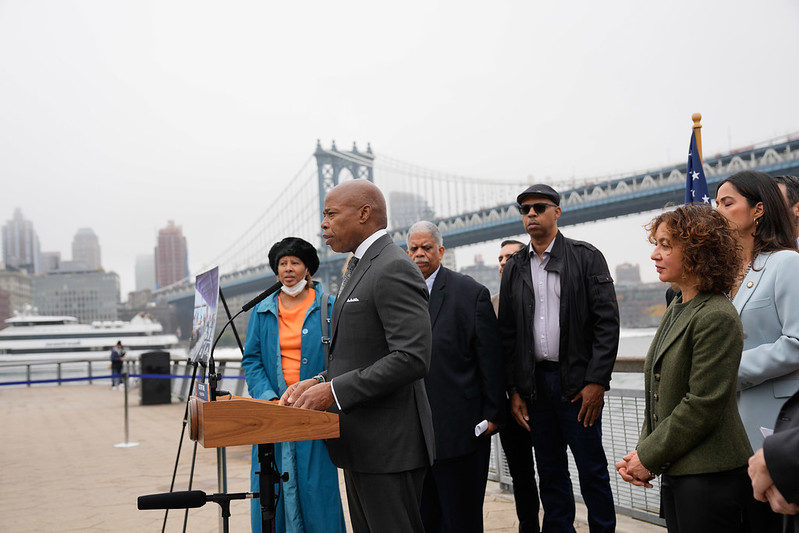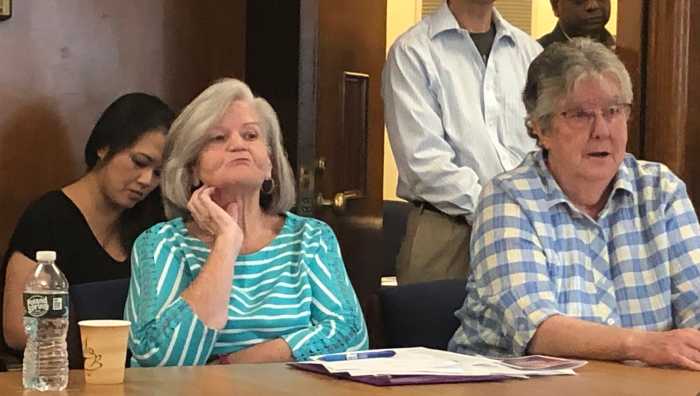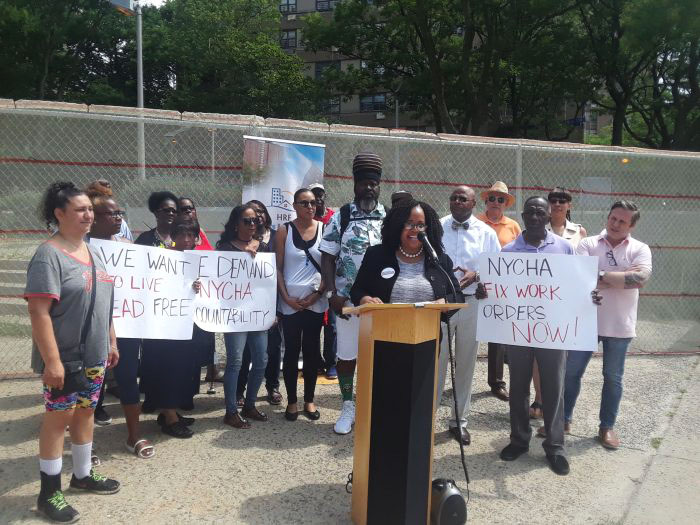On the 10th anniversary of Superstorm Sandy this week, Mayor Eric Adams broke ground Wednesday on a new $522 million East River resiliency project in the Two Bridges section of Manhattan consisting of several “flip-up” flood barriers and a new program to build a cash of community-focussed climate infrastructure projects for the city to develop in the years to come.
The project, dubbed the Brooklyn Bridge-Montgomery Coastal Resilience (BMCR) project, would add infrastructure intended to mitigate sea-level rise and resist storm surges along the Two Bridges waterfront. Those mitigation measures would include several flood walls and deployable flip-up barriers designed to protect against a 100-year coastal storm surge and account for sea-level rise by the year 2050.
Speaking at the groundbreaking at Pier 35 Wednesday morning, the mayor reflected on the devastation wrought on the city by Sandy a decade ago, which left 44 people dead, caused 2.5 million New Yorkers to lose power and resulted in $19 billion in damages and lost revenue for the city.
“Ten years ago this week, New Yorkers saw what a storm supercharged by climate change can do to a city,” Adams said. “Flooded subways. A week long blackout downtown. Riding downtown, seeing this city in darkness, both [with the] lights off and just the spirit of the people were devastated. Thousands of New Yorkers without homes, without water, without utilities. Our buildings and property [were] damaged. And most importantly, 44 New Yorkers lost their lives.”
The mayor was accompanied by Deputy Mayor for Operations Meera Joshi, Mayor’s Office of Climate and Environmental Justice (MOCEJ) Executive Director Kizzy Charles-Guzman, state Senator Leroy Comrie and U.S. Rep. Jerry Nadler as well as other electeds.
Adams said that while the deployable flood barriers will help protect the roughly 44,000 residents living in Two Bridges from future storm surges, they will be hidden in the ground while they’re not in use – 99% of the time, allowing residents to still take advantage of the waterfront views and park space.
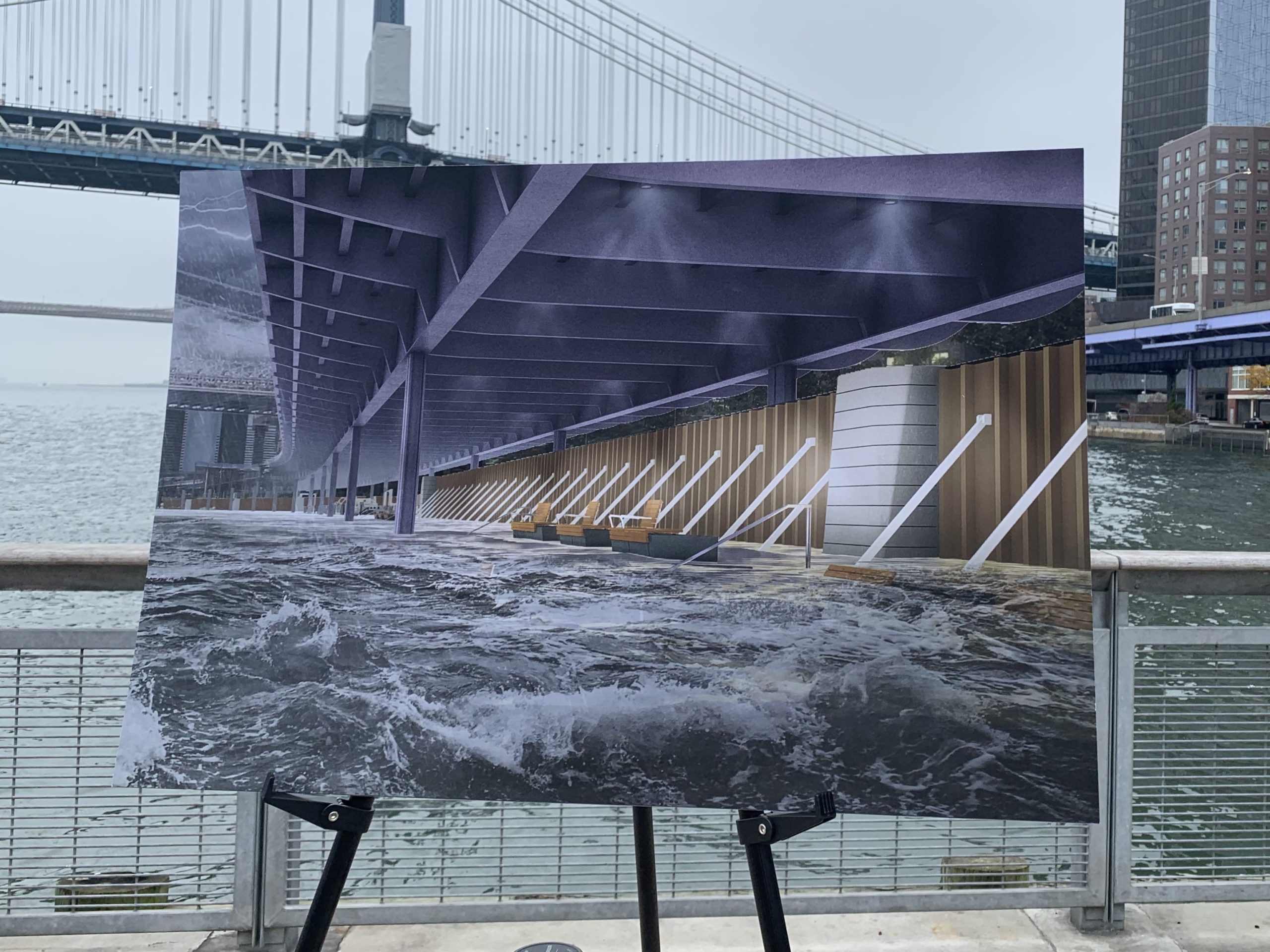
“Once this is in place, moveable flood walls will protect the two bridges neighborhood of Manhattan when needed, while continuing to preserve views and access to the waterfront when they are not being utilized,” the mayor said. “We understand that we will not be imprisoned to the storm, but we must be prepared for the storm.”
According to a spokesperson for Adams’ office. the project will come in at $522 million, with the U.S. Department of Housing and Urban Development (HUD) footing a third of the bill – $172 million – and the city covering the rest with funds allocated in the Fiscal Year 2023. The project is expected to be completed by 2026.
Thomas Foley, who runs the city’s Department of Design and Construction, said the project will include over 100 flip-up gates that will be nine feet high when raised during a storm. It will be connected to the East Side Coastal Resiliency Project slightly further up the East Side, which broke ground earlier this year.
Foley said 93 of the gates are hydraulic powered and will rise within a couple of minutes at the press of a button. The other 18 are manually operated, although one is powered by a generator, he added. They’ll be controlled by a team made of leaders from city Emergency Management and the Department of Transportation.
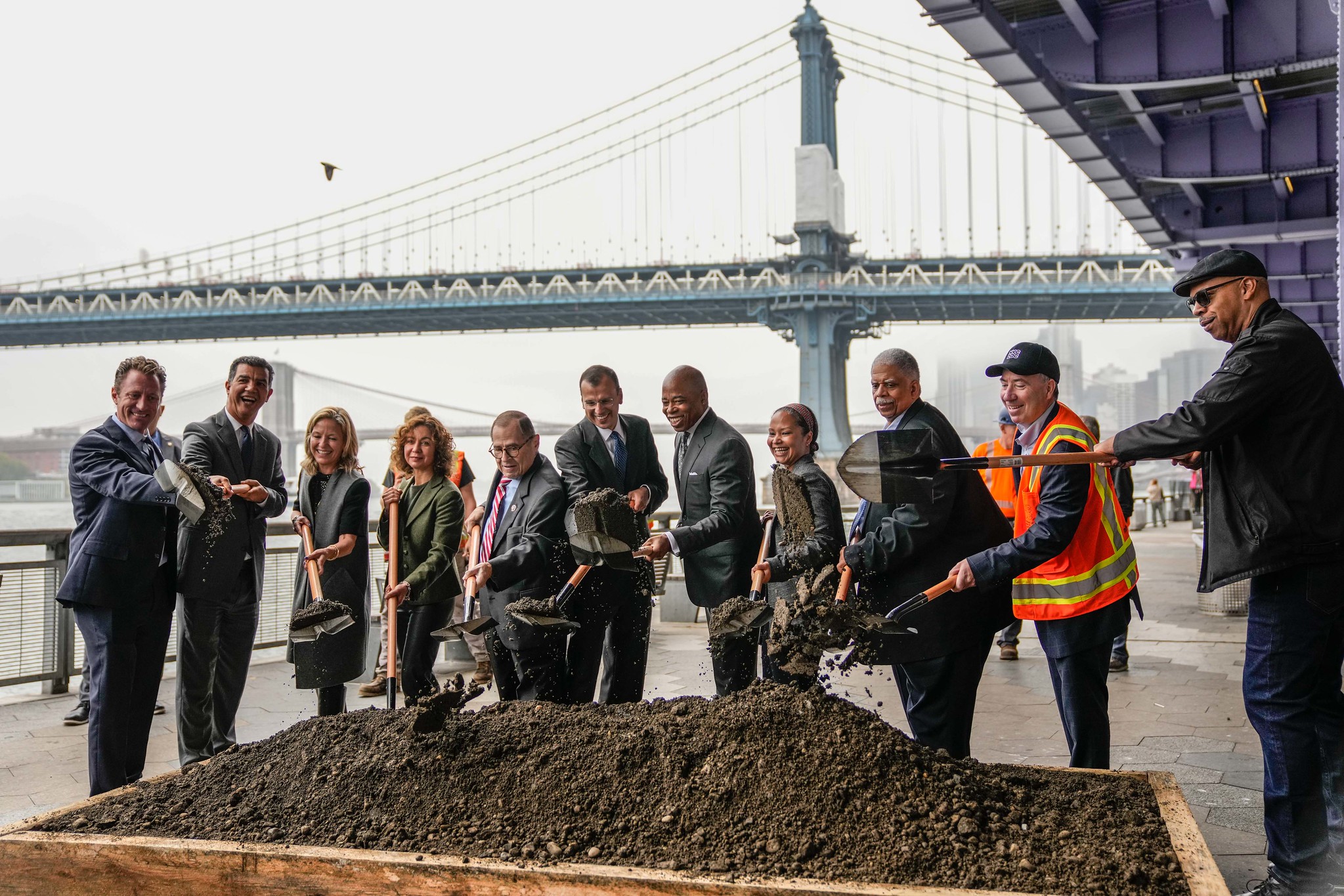
Adams also announced the launch of a new program billed Climate Strong Communities, which is aimed at putting together a list of resiliency projects in areas that didn’t benefit from Sandy-recovery funding and are often left out of the city’s environmental resiliency efforts. Guzman said this program is a way for the city to be “proactive instead of reactive,” planning for all kinds of environmental hazards that could plague parts of the city as the effects of climate change grow more extreme.
“Our city, yes, is vulnerable to storms like Sandy,” Guzman said. “But also to extreme heat, which kills far more people than storms do. And also extreme rainfall, like we experienced during Hurricane Ida. And chronic flooding during high tide as a result of sea level rise. Climate Strong Communities is considering all of those challenges and the unique ways in which they impact our communities.”
However, Guzman said, the success of this program is dependent on receiving billions more in federal dollars. And the city will need at least $8.5 billion from the federal government, Adams said, to complete all of the coastal resiliency projects needed to fortify its shores.
Nadler said he’ll do everything within his power to allocate that funding at the federal level.


